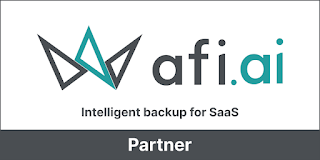When integrating a new system into your company's workflow, it is essential to recognize that not everyone will respond in the same manner. Enthusiasm levels during this process can vary significantly from department to department and even among individual employees. Understanding how to prepare for Microsoft 365 migration can greatly benefit you.
To effectively prepare for the Microsoft 365 migration, it's best to begin by analyzing the necessary steps well in advance to ensure a smooth and efficient transition. Planning ahead allows for quicker implementation both technically and in terms of employee performance. If you're unsure where to begin, we are here to assist with your Microsoft 365 migration.
How to Prepare for Microsoft 365 Migration
1. Determine the Project Scope
Prior to commencing migration planning, it is crucial to comprehend your existing environment. This involves identifying the data requiring migration and its current location. Also, take into account other elements like customizations, essential user functionality, and security and compliance considerations to resolve. As you collect this data, you can construct an overview of the volume of data to migrate, the projected duration of the process, and its ramifications on end users.
2. Verify DNS records
Ensuring DNS (Domain Name System) record verification prior to migrating to Microsoft is crucial for maintaining consistent service availability, and reliable email delivery. Well-configured DNS records play a key role in enhancing the security of your organization's online infrastructure and minimizing the risk of disruptions throughout the migration. Conducting DNS record verification in advance allows for proactive issue resolution and facilitates a seamless transition to Microsoft services.
3. Choose the Right Migration Tool
Businesses transitioning to Microsoft 365 have various options to consider. While Microsoft provides a native migration tool suitable for small, straightforward projects, many companies discover that a third-party migration solution offers superior outcomes and speed for more intricate migrations.
When deciding between a do-it-yourself (DIY) approach or engaging a migration expert, evaluate factors such as the volume of data requiring migration, the complexity of your environment, and the tolerance for potential downtime if complications arise during migration.
Opting for a migration expert? Select a vendor with a track record of successful Microsoft 365 migration projects. The ideal partner possesses extensive technical proficiency and reliable tools to ensure a seamless transition.
4. Prioritize Old Environment Cleanup
Before initiating the migration process, dedicate time to tidy up and streamline the existing environment. This involves deleting or archiving unused mailboxes and inactive databases while adhering to regulatory guidelines. Additionally, eliminate redundant and obsolete data. Migrating unnecessary data can significantly inflate both the time and cost of the migration process.
5. Provide an Accurate Estimate of Migration Duration
Providing an accurate estimate of migration duration is crucial for effective planning and resource allocation. It helps minimize disruption to business operations by allowing stakeholders to anticipate potential downtime and plan accordingly. Additionally, accurate estimation enhances client satisfaction by setting clear expectations and demonstrating transparency in project delivery.
6. Leave it to the specialists
Once the initial assessments are finished, it's essential to rely on your dedicated IT department or engage external professional consultants specialized in this field to ensure the preservation of your valuable data throughout the process.
Partner with Experts to Prepare and Deploy Microsoft 365 Migration
Trust our seasoned team with your Microsoft 365 migration journey. Whether you're switching from Google or another platform, we've got the tools and know-how for a seamless transition. With over 10 years of migration expertise, we will tackle compliance challenges head-on, ensuring a smooth journey from start to finish. As your trusted Microsoft partner, we'll guide you through selecting and configuring the perfect solution for your Microsoft 365 migration success. Schedule a consultation today.



